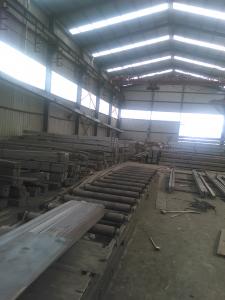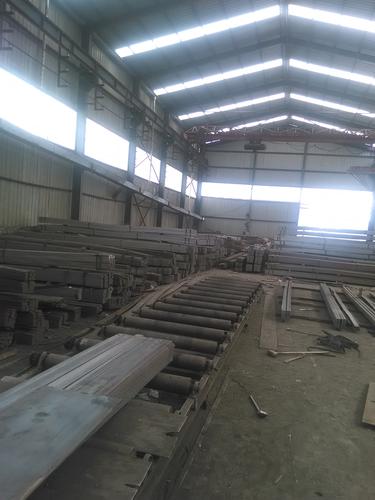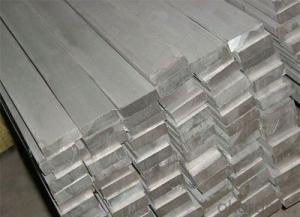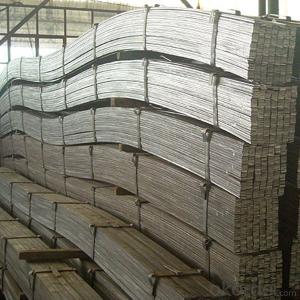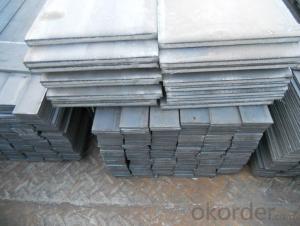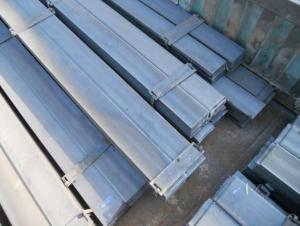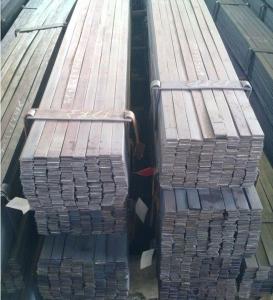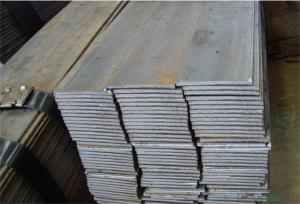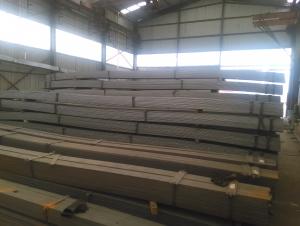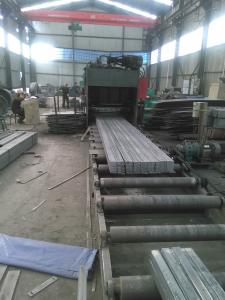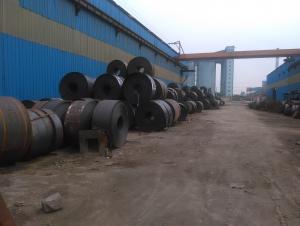S275JR Grade Flat Iron Steel Bars
- Loading Port:
- Tianjin
- Payment Terms:
- TT or LC
- Min Order Qty:
- -
- Supply Capability:
- 10000T m.t./month
OKorder Service Pledge
OKorder Financial Service
You Might Also Like
Product Description:
OKorder is offering S275JR Grade Flat Iron Steel Bars at great prices with worldwide shipping. Our supplier is a world-class manufacturer of steel, with our products utilized the world over. OKorder annually supplies products to African, South American and Asian markets. We provide quotations within 24 hours of receiving an inquiry and guarantee competitive prices.
Product Applications:
S275JR Grade Flat Iron Steel Bars are ideal for structural applications and are widely used in the construction of buildings and bridges, and the manufacturing, petrochemical, and transportation industries.
Product Advantages:
OKorder's S275JR Grade Flat Iron Steel Bars are durable, strong, and wide variety of sizes.
Main Product Features:
· Premium quality
· Prompt delivery & seaworthy packing (30 days after receiving deposit)
· Can be recycled and reused
· Mill test certification
· Professional Service
· Competitive pricing
Product Specifications:
Manufacture: slited
Slitting precision (width) : 0.5 mm or less
Raw material: Q235B, Q345B, Q235-1 b
crosscutting precision (length) : 2 mm or less
Processing: the thickness of 2.0-16 mm;
Shear length: 2000 mm above
Wide degree: 15-1250 - mm;
Leveling precision: 1-2 MM square
Packaging: Export packing, nude packing, bundled
FAQ:
Q1: Why buy Materials & Equipment from OKorder.com?
A1: All products offered byOKorder.com are carefully selected from China's most reliable manufacturing enterprises. Through its ISO certifications, OKorder.com adheres to the highest standards and a commitment to supply chain safety and customer satisfaction.
Q2: How do we guarantee the quality of our products?
A2: We have established an advanced quality management system which conducts strict quality tests at every step, from raw materials to the final product. At the same time, we provide extensive follow-up service assurances as required.
Q3: How soon can we receive the product after purchase?
A3: Within three days of placing an order, we will arrange production. The normal sizes with the normal grade can be produced within one month. The specific shipping date is dependent upon international and government factors, the delivery to international main port about 45-60days..
Images:
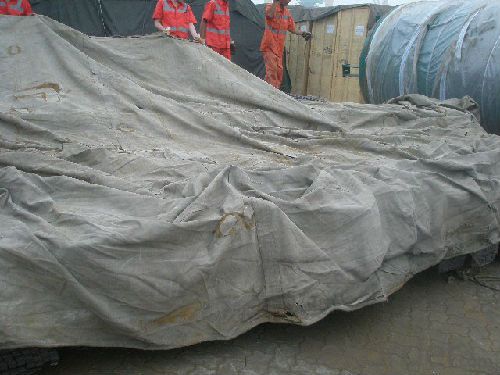
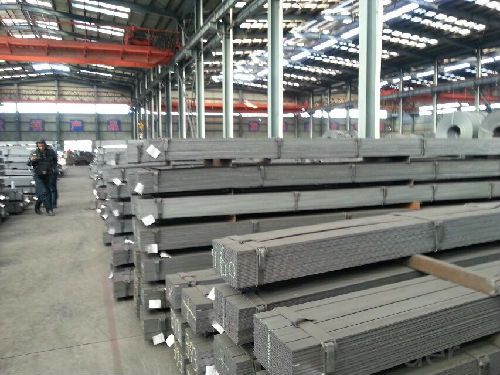
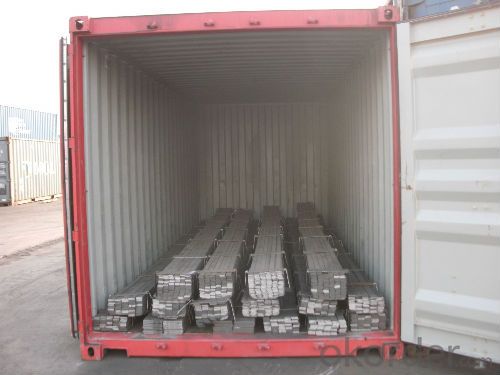
- Q: What is the fire resistance of a steel flat bar?
- The fire resistance of a steel flat bar depends on several factors including the specific composition of the steel, its size and thickness, and the duration and intensity of the fire. Steel is generally known for its high melting point and structural integrity even at high temperatures. It has a higher fire resistance compared to materials like wood or plastic. However, when exposed to extremely high temperatures, steel can lose its strength and eventually deform or collapse. In fire-resistant applications, steel is often coated with fire-resistant materials or combined with other fireproofing measures to enhance its fire resistance. Therefore, it is important to consult fire safety standards and regulations, as well as considering additional fire protection measures, to ensure the appropriate fire resistance of a steel flat bar in a specific application.
- Q: What is the difference between 60X6 and 50X4 flat steel in grounding?
- There are differences, mainly based on the local geological conditions, the purpose is to meet the requirements of grounding resistance.
- Q: Can steel flat bars be used for making security gates?
- Yes, steel flat bars can be used for making security gates. Steel is a durable and strong material that provides excellent security and protection. Flat bars, in particular, can be easily welded or bolted together to create a sturdy gate structure. Additionally, steel flat bars are resistant to corrosion and can withstand harsh weather conditions, making them suitable for outdoor use. By using steel flat bars, security gates can be constructed to provide a high level of security and ensure the safety of a property or premises.
- Q: Are steel flat bars suitable for making frames or supports?
- Yes, steel flat bars are suitable for making frames or supports. They are known for their strength, durability, and stability, making them an ideal choice for constructing frames and supports that require structural integrity and load-bearing capabilities. Additionally, steel flat bars can be easily welded or bolted together, providing flexibility in design and construction.
- Q: Can steel flat bars be used for making kitchen or bathroom fixtures?
- Steel flat bars can certainly be used for making kitchen or bathroom fixtures. Steel is a versatile material that offers durability and strength, making it suitable for various applications. Steel flat bars can be fabricated and shaped into different forms, such as brackets, supports, or frames, which are essential components in constructing fixtures like shelves, towel racks, or even countertop supports. Additionally, steel is resistant to corrosion and moisture, making it ideal for use in moist areas like kitchens and bathrooms. However, it's important to note that steel alone may not be suitable for direct contact with food or water, so appropriate coatings or finishes should be applied to ensure hygiene and prevent rusting. Overall, steel flat bars can be a reliable and practical choice for constructing kitchen or bathroom fixtures due to their strength, versatility, and resistance to moisture and corrosion.
- Q: Can steel flat bars be hardened or heat treated?
- Yes, steel flat bars can be hardened or heat treated. Heat treatment processes such as quenching and tempering can be applied to steel flat bars to enhance their strength, durability, and other mechanical properties.
- Q: Can steel flat bars be used for making agricultural machinery?
- Yes, steel flat bars can be used for making agricultural machinery. Steel is a durable and strong material that can withstand the harsh conditions and heavy loads often associated with agricultural machinery. Flat bars can be shaped and welded to create various components and structures required in agricultural machinery, making them suitable for this purpose.
- Q: Are steel flat bars resistant to fire?
- No, steel flat bars are not inherently resistant to fire. While steel has a high melting point, it can still weaken and deform when exposed to high temperatures. However, steel is often used in fire-resistant applications alongside other fire-resistant materials to enhance its fire resistance.
- Q: How do steel flat bars contribute to the overall aesthetics of a design?
- Steel flat bars can contribute to the overall aesthetics of a design by adding a sleek and modern touch. Their clean lines and smooth surface create a visually appealing contrast when combined with other materials. Additionally, steel flat bars offer versatility in terms of shape and size, allowing designers to create unique and intricate patterns that enhance the overall visual appeal of the design.
- Q: How do I calculate the weight of a steel flat bar?
- To calculate the weight of a steel flat bar, you need to know its dimensions and the density of steel. The weight can be calculated by multiplying the volume of the bar (length x width x height) by the density of steel, which is typically around 7850 kg/m³.
Send your message to us
S275JR Grade Flat Iron Steel Bars
- Loading Port:
- Tianjin
- Payment Terms:
- TT or LC
- Min Order Qty:
- -
- Supply Capability:
- 10000T m.t./month
OKorder Service Pledge
OKorder Financial Service
Similar products
Hot products
Hot Searches
Related keywords
